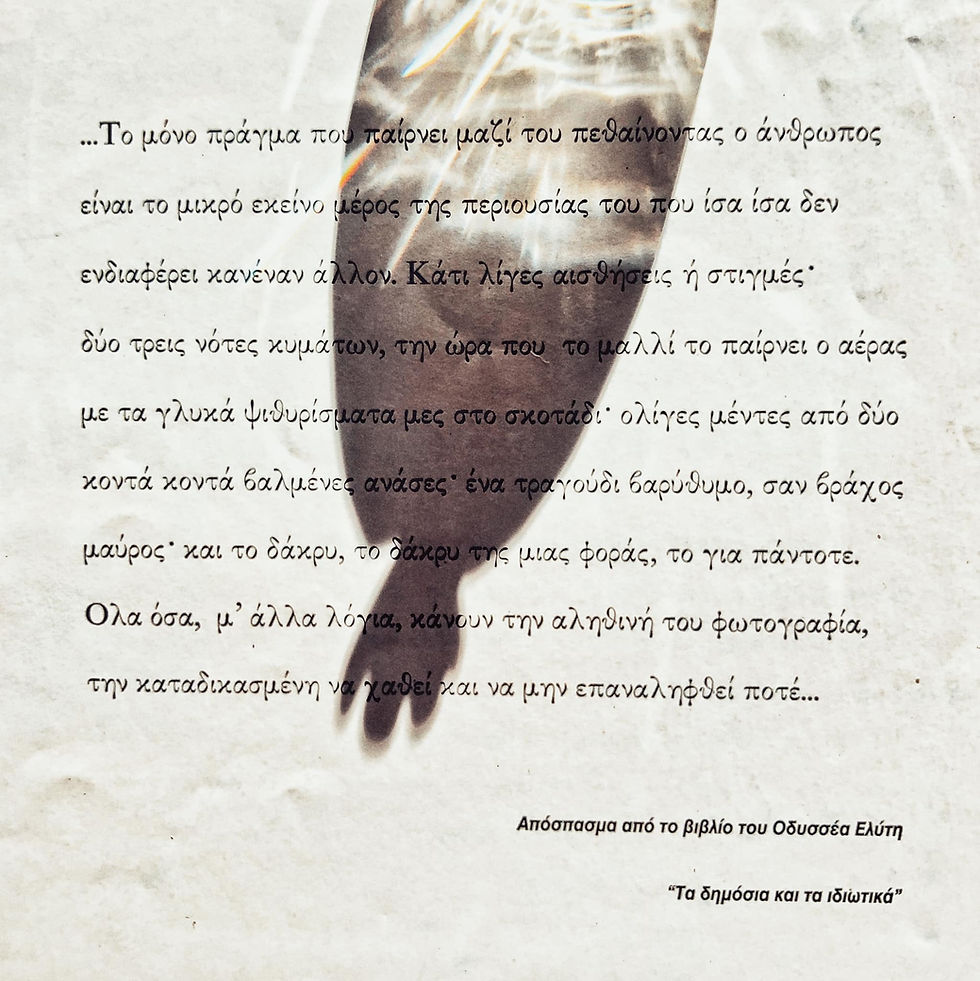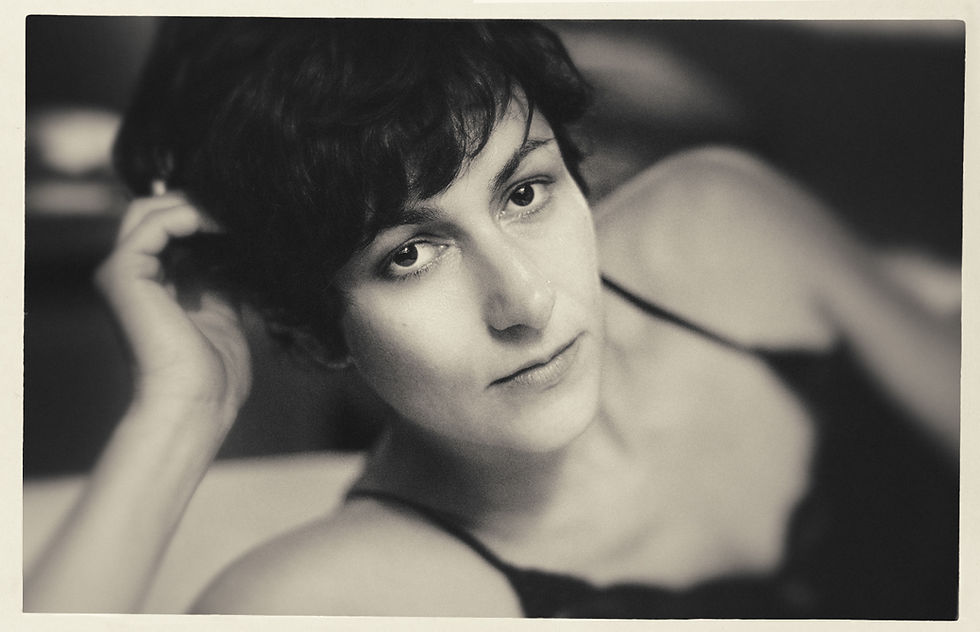Photography & Poetry
- Christos Tsoumplekas
- Jun 20
- 4 min read
The term 'photopoetry' and its various alternatives - photopoème, photoetry, photoverse, photo-graffiti etc. - attempts to describe an art form in which the poetry and photography are equally important and, often, directly and symbiotically related. Michael Nott suggests that:

"the relationship between poem and photograph has always been one of disruption and serendipity, appropriation and exchange, evocation and metaphor"

Photographs are often referred to as having 'poetic' qualities. A photograph and a poem may have similar qualities. In 1981, Italian photographer Luigi Ghirri produced a series of photographs of his hometown which he referred to as Smalltown Poetics. A recent (2008) retrospective anthology of Manual Alvarez Bravo's photographs is entitled Photopoetry. Neither includes poems. Jack Kerouac's famous introduction to Robert Frank's The Americans praises the photographer for having "sucked a sad poem right out of America onto film." An online interview with Canadian photographer Jeff Wall is titled Pictures Like Poems.
One might consider a particular attitude or way of perceiving the world as 'poetic':
Poetry is a state of being, of attitude. It’s an exalted, ecstatic state of living, of seeing, of experiencing: [an] intense, intensified way of seeing, perceiving reality, both in art and living. There is poetry in literature, in cinema, in dance, in all of the arts.
-- Jonas Mekas
Poetry and photography are clearly distinct art forms. The history of poetry is much longer than that of photography. One makes pictures out of words, the other makes pictures out of light. Most photographs represent a fraction of the time contained in most poems. But how are poems and photographs similar? What unites poets and photographers?

The 'language' of one can be used as a metaphor for the 'language' of the other. Poems can be like 'snapshots'. Photographs can be 'lyrical'. Poems and photographs are both representations of something. Words and photographs are both special types of sign. If the written word is the 'image' of spoken language then the photograph is the 'image' of the visual subject. Poems and photographs could be said to have frames (this is especially true of shorter, single page poems which have a clear edge). They are both compressions, or abstractions, of reality. They both convey an experience of heightened perception, an intensity of looking/feeling. Poets and photographers perhaps share a common interest in transforming a lived experience into a memorable representation (a work of art?) They both enjoy collecting, organising, cataloguing, editing, arranging, sequencing, publishing, communicating. Works of photopoetry seek to connect poems and photographs whilst maintaining their distinctness.

Some suggested activities:
Create a series of photographs in response to an existing collection of poems. For example, you could attempt to re-present older, well-known poems, imagining you have commissioned to create new images to accompany a publication aimed at a younger audience. Alternatively, you could select more contemporary poems (either by the same author or by a range of poets but on a similar theme) and attempt to provide a parallel photographic expression of the main ideas, moods, characters and situations etc.
Write a collection of poems in response to existing photographs. Will you choose a particular poetic form - haiku, sonnet, villanelle, sestina etc. - or will you wrote in free verse? Will you choose famous, historic photographs or more contemporary examples? Will your poems be about the photographs (an attempt to describe aspects of the images) or be separate, parallel works of art? Will you experiment with innovative typographic design (perhaps inspired by some of the Surrealist photopoetry examples above) or do you prefer more conventional approach to the presentation of your poems i.e. poem and photograph on facing pages?
Collaborate on the creation of a new, original photopoetry publication with a writer/photographer. Will you both contribute poems/photographs or separate your roles? Is there someone you know who is studying or interested in photography and/or creative writing with whom you could collaborate? Are you able to use social media to connect virtually (and safely) with a collaborator? Could a teacher help facilitate a collaboration with another student/class in school? Will you choose to publish your work as a book, zine or pamphlet or could the collaboration be shared on the Internet in some form - a blog, a website, a video etc?
Create a series of photographs based on 'found' poems. Found poetry (like the slogans on the shirts photographed by Hand Eijkelboom in New City Poetry) is usually hiding in plain sight. For example, you could 'find' these poems in newspapers, magazines or on the Internet by using Brion Gysin's Cut-Up method). You might make notes of text you 'find' on the street - signs, posters, advertising hoardings etc. - combining them later into poetic shapes.
Write you own poems and take your own photographs. If you feel confident in both art forms, why not have a go at doing the whole thing yourself? What will come first - the words or the pictures? Perhaps they will evolve in parallel.




Comments